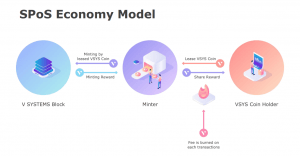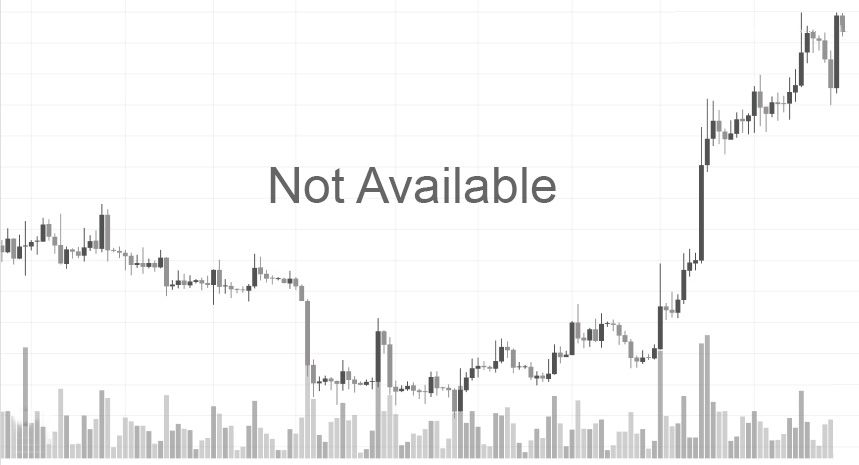V Systems is the blockchain-powered database cloud platform. Together with its VSYS token, it promises data management with high level of decentralization, scalability and support for a virtually limitless number of blockchains.

What Is V Systems Platform?
Following the launch of its mainnet in late 2018, V Systems was set on a fast track to becoming one of the top 50 crypto projects in the first half of 2019. The reason for this elevated interest in what it has to offer may be the pervasiveness of the very thing the V Systems project promises to improve: data, or, to be more precise, its management. V Systems sees itself as the first building block in creating a blockchain-based infrastructure that aims to wed database management and cloud services. This solution was born out of the V Systems designers’ awareness that the existing cryptocurrencies such as Bitcoin, are hardly functional as database media since they are not designed for such type of usage and feature no native data modeling solutions.
The reasons for launching the V Systems platform are arguably numerous, as it is bent on both increasing the competitive advantages of blockchain as a functional database management technology, and reducing the cost of its implementation in general. The project’s chief designer is Sunny King, the mastermind behind today’s ever-present Proof of Stake (PoS) consensus algorithm as well as Peercoin and Primecoin projects. In early 2019, King and his team put their backing behind one of the most successful initial exchange offerings (IEOs) for V Systems, which saw 8.09x price increase (as of July 2019) following its introduction on the ZB.COM Launchpad.
What Is V Systems Trying to Achieve?
While V Systems started out its development with a focus on positing blockchain as a competitor to standard databases, its aims were gradually expanded to include several more general applications:
- V Systems aims to prove the superiority of blockchain-based database systems compared to traditional ones, with immutability, security and openness being some of its main advantages. The developers of V Systems identified the centralized control of traditional databases and the account creation process associated with them as their main weak spots. A high degree of decentralization offered by V Systems should reduce its security vulnerability, with the loss of user data often happening as a result of hacking attacks. V systems should also promote decentralized interactions between blockchains on an unprecedented scale. At the same time, these interactions are not to be limited to data storage, as the supported blockchains within the V Systems’ ecosystem might as well have diverse use cases.
- V Systems wants to promote distributed collaboration based on rules which is to be achieved with the help of its blockchain. This solution emerged in response to a largely centralized administration of traditional databases. This level of centralization led to the creation of private databases, to which V Systems offers itself as an alternative in the form of its public databases with the digital privacy concept. With it, the privacy and anonymity are protected with the help of virtual identities. The majority of data can be considered public unless it is encrypted and stored on the blockchain.
- A blockchain database running as part of the V Systems platform may also provide an integrated and highly descriptive manner of representing data, helping the application developers to focus on business logic inside the software. This is to be helped by phasing out traditional user accounts and replacing them with public-private addresses and keys which are part of blockchains. V Systems supports the use of privileged key pairs (“administrators”) which can be made part of the client software, with a possibility to designate those which breach service agreements as violators and instruct nodes to ignore the data associated with those keys.
- V Systems plans to add several advanced database features down the line to support the platform’s effort to challenge traditional databases of today. For starters, the developers promise the introduction of advanced database query capabilities. Its query language will be object-relational (similar to MongoDB) and posit itself as a more flexible contender of popular models such as SQL. Database migration will also be supported, with an option to treat migration to a separate blockchain as a more effective solution to the scaling issues. The migration will be helped by the platform providing a set of migration tools for that purpose. Finally, V Systems platform will remain focused on modularity as a solution to reducing development and maintenance costs for both the platform and individual chains in its ecosystem.
- Finally, V Systems hopes to find its place among various applications including decentralized finances (DeFi), entertainment and social media. Once its smart contract system is fully implemented, the developers will work on expanding it to include use cases ranging from asset digitization, project financing, insurance and health to advertising and gaming.

How Does SPoS Consensus System Work?
V Systems’ Supernode Proof of Stake (SPoS) consensus algorithm was launched in late 2018 and implemented as the basic layer for V SYSTEMS. Its design was informed by two factors: the desire to move away from the shortcomings of the Proof-of-Work (PoW) and Proof-of-Stake (PoS) mechanisms, and the drive to unite their working features into a best-of-both-worlds type of solution. The developers hope to see SPoS replace the existing popular mechanisms, just as they did with one another back in the day. The main features of SPoS are as follows:
- While Proof-of-Stake was introduced to reduce the expenses associated with the blockchain technology and the entry barriers for its use, it arguably failed to provide incentives by which the nodes would be stimulated to engage in hardware upgrading and random block generation. As this reportedly hurt the PoS’ global scalability potential, the SPoS was specifically built to sidestep this issue. Its incentives serve to promote hardware upgrades, continual performance improvements and support for an extensive and system-wide minting.
- Based on the SPoS mode of operation, the so-called elevated nodes or supernodes operate as minting pools. At the same time, the holders of VSYS tokens as the native currency of the V Systems platform, assume the role of minters which lease their tokens to supernodes. They are eligible for receiving payments in the form of interest which serves as the basis of this incentive model.
- This system is supposed to ensure that the nodes of sufficiently high quality remain in the game, while promoting the establishment of a genuinely decentralized ecosystem in which the governance over the platform is maintained by the owners of VSYS tokens.
- The SPoS-based system is also designed to promote healthy competition among the nodes that want to be promoted to supernodes. This is done by evaluating their average minting balance and choosing the winners among them. This approach is billed as being based on pure math, while maintaining sufficient stake liquidity levels on the platform.
How Does V Systems Plan to Improve Its Accessibility?
V Systems’ plans to transform its platform into a building block of a future digital economy rest on its success in making it highly accessible to developers and users alike. One of the main advantages to be offered to developers is V Systems’ dedicated cloud-based platform toolset, which will help them in setting up blockchains for specific applications, even before their business cases have been fully developed. The developers will be provided with a blockchain template which will allow for the selection of diverse protocol parameters alongside a wide array of pluggable components:
- Pluggable consensus models
- Pluggable business logic container
- Database management component
- Database operation component
- Database query component
- Shared peer-to-peer networking
- Full node with blockchain processing
- Smartphone based light‐weight cold and hot wallet
- Browser-based wallet
At the same time, the system will offer access to various protocol layers:
- Consensus management layer
- Block tree management layer
- Interchain processing layer
- Transaction processing layer
- Data format layer
- Peer-to-peer network layer
- Internet protocol layer
This level of flexibility should allow companies and individuals to streamline the blockchain design and simplify the process of migrating to it, even without possessing an expert-level knowledge in coding. Based on this, the V Systems team claims that even “primary school students” will be empowered enough to develop a blockchain.

VSYS Token’s Push for Digital Economy
In addition to serving as a means of providing an economic incentive in the V Systems’ ecosystem, the VSYS tokens will be also used for
- Paying transaction fees
- Accessing applications built under the umbrella of the V Systems, such as smart contracts and decentralized apps
- Paying for the use of resources which are needed for the projects developed with the help of the platform’s decentralized database cloud.
VSYS tokens are designed to support the sustainable economic expansion of their native platform, with some 5.5% of them being generated through supernode coinage on an annual basis. The supernodes are tasked with minting out some 238.824 million VSYS coins as part of the platform’s focus on stability and the protection against unstable inflation. Further stability of this economic system is to be achieved by keeping the total transaction cost of the system in line with its economic expansion rate.
As of August 2019, approximately 1.7 billion VSYS tokens were found in circulation. At the same time, the currency’s market cap was valued at approximately USD 395 million. Acquired VSYS tokens can be stored in a secure VSYS official wallet provided by the project’s team. The tokens are available for trading on cryptocurrency exchanges whose list includes KuCoin, Bitfinex and others.
